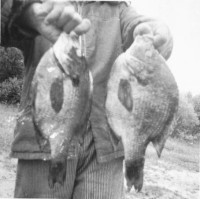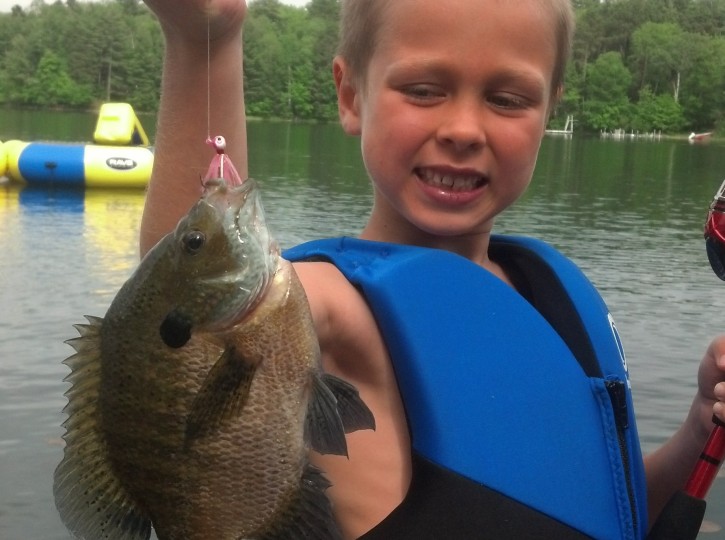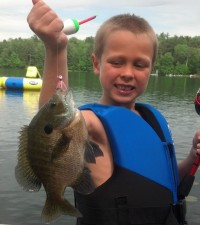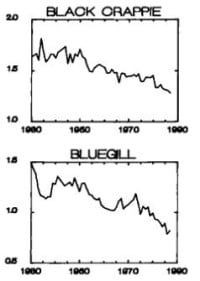It’s that time of year again, where the biggest gills in the lake congregate in trailer-tire sized depressions along the shores of your favorite lake. It’s an exciting time to fish for gills, as some great action for big fish is relatively easy to pinpoint. Drive around and look for the beds, if gills are present, cast to them and hold on.
With great fishing for any species, comes a bit of pause to ensure that kind of fishing exists for generations to come. I had a small confrontation with some folks in a boat that appeared to be picking off the larger fish only and keeping them as they made their way down the shoreline of the small lake my kids and I were fishing. My goal wasn’t to harass or scold, but I hoped to inform them that this is a particularly vulnerable time for gills as it related to the size structure of the less-than-100 acre lake we were fishing. Keeping limits of bluegills during spawning is certainly a legal activity, and the last thing I wanted to do was to upset anyone. That said, high-grading is something that’s gotten our bluegill fisheries in most of the US into trouble over the past few decades, especially in MN.

Common back in the day, this is a pair of dandies from my grandpa when fishing the Alexandria area, early 1940’s.
In a particularly revealing study from the Park Rapids, MN area (Olson and Cunningham, 1989), big fish contest entries from the local paper were studied over a 58-year period for panfish. The associated graph shows a strong decline in average weight of both black crappie and bluegill species. If you look at the MN records for both of these species, you see they’re both from the 1940’s. Over-harvest is the likeliest culprit as to why we are where we are today, as angling pressure both in terms of effort and technology have only increased despite the lowering of limits, including special regulations for some lakes.
How can we make a difference? Purely and simply by releasing big males. “Large parental males protect nests, sexually mature at 7-8 years (Gross, 1982), and grow faster. Cuckolder males sneak in to fertilize, provide no parental care, grow slowly, die young, and sexually mature in 4-5 years (Mackenthun, 2010).”
With the biggest males in the lake being up on beds, willing to hit most anything presented properly, this is one of the most vulnerable periods possible for overall health of the bluegill fishery in any lake you choose to fish. Please release these fish to carry on their duties, and be around for all of the other times of year you choose to fish them!
I’d like to thank Scott Mackenthun, MNDNR Assistant Area Supervisor for the Waterville office for so succinctly and effectively putting together much of this information for a trophy gill presentation he’s done at a number of venues. If you ever have the chance to pick his brain, there’s much to be learned!
Resources:
Gross, M.R. 1982. Sneakers, satellites, and parentals – polymorphic mating strategies in North American sunfishes. Zeitschrift fur Tierpsychologie 60: 1-26.
Machenthun, Scott. 2010. Trophy Panfish Presentation. Thorne Brother’s Retail Store Seminar.
Olson, D.E. and P.K. Cunningham. 1989. Sportfishing Trends Shown by an Annual Minnesota Fishing Contest over a 58-Year Period. North American Journal of Fisheries Management 9: 287-297.


